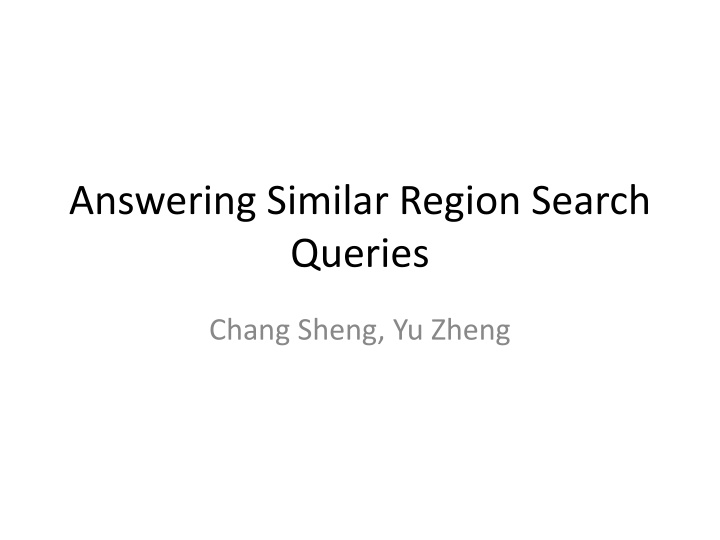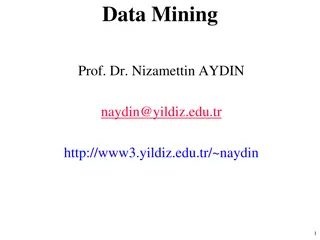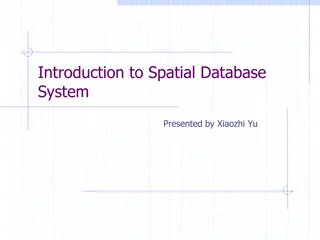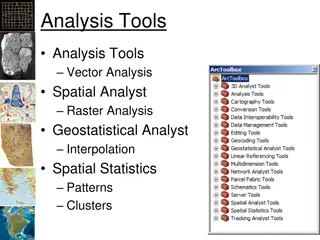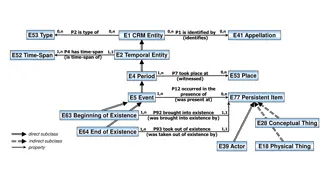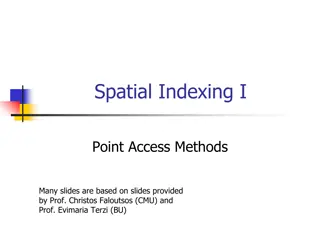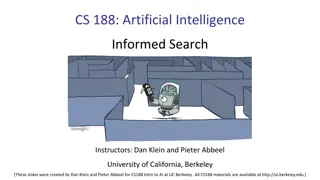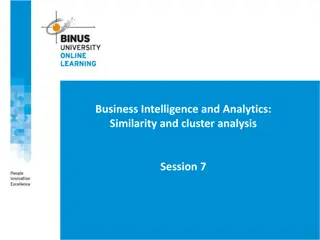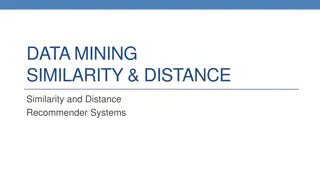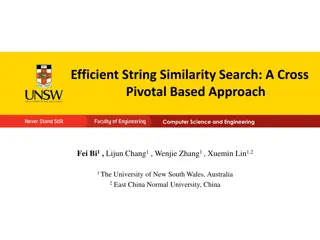Enhancing Region Search Queries with Content and Spatial Similarity Measures
This project focuses on developing a system to provide top-k similar regions on a map based on user-specified query regions. By incorporating content and spatial similarity measures, the algorithm aims to accurately retrieve regions with similar shapes, scales, and representative categories. Challenges include defining region similarity and designing an efficient K-NN search algorithm. The goal is to offer location recommendations for places like shopping malls, movie centers, and travel spots.
Download Presentation

Please find below an Image/Link to download the presentation.
The content on the website is provided AS IS for your information and personal use only. It may not be sold, licensed, or shared on other websites without obtaining consent from the author.If you encounter any issues during the download, it is possible that the publisher has removed the file from their server.
You are allowed to download the files provided on this website for personal or commercial use, subject to the condition that they are used lawfully. All files are the property of their respective owners.
The content on the website is provided AS IS for your information and personal use only. It may not be sold, licensed, or shared on other websites without obtaining consent from the author.
E N D
Presentation Transcript
Answering Similar Region Search Queries Chang Sheng, Yu Zheng
A region specified by a user Objective : Given a query region on a map, return the top-k similar regions on this map Expected Results An Irrelevant Result
Motivation Possible applications Location recommendation: recommending similar shopping malls, movie centers or travel spots Challenges How to define the similarity between geo-regions How to retrieve the similar region based on a user- specified region Different scales (as big as a shopping street or as small as a cinema) Different shapes (rectangles of different size)
What we do Devise a similarity measure between geo-regions Content similarity: Representative categories located in a region Spatial similarity: geo-spatial distribution of representative categories Design a fast K-NN search algorithm Retrieve the top-k similar regions accords to user-specified query region The algorithm can ensure the returned regions have similar shape and scale as the query (basic criteria); have the top-k similarity scores in terms of the defined similarity measure Fast enough for online search
Similarity Measures Geometric properties Scales and shapes Content properties POI (point of interest) categories Representative categories Spatial properties Distribution of POIs of representative categories. Reference points (c) Shopping area A query region
Content similarity Detect the representative categories: CF-IRF Category Frequency (CF) of the category Ci in region Rj, denoted as Cfij , is the fraction of the number of PoIs with category Ci occurring in region Rj to the total number of PoIs in region Rj The Inverse Region Frequency (IRF) of category Ci, denoted as IRFi, is the logarithm of the fraction of the total number of grids to the number of grids that contain PoIs with category Ci. The significance of a category Ci in region Rj, is ? = ?? ???
Spatial Similarity Two methods Mutual distance Reference distance: The average distance of all the points in P/Q to each of the reference points The distance of K categories to the reference point Oi is a vector of K entries.
Fast Retrieval Algorithm Offline process Quad-tree-based space partition Detect the representative categories Extract the feature vectors Indexing features and feature bounds Online process Detect representative categories Category-based pruning Spatial-based pruning Expanding
Quadtree and inverted list Partition geo-spaces into grids based on quadtree Each quadtree node stores the features bound of its four adjacent children The feature bound is calculated in a bottom-up manner
System overview On-Line Process Off-Line Process A Query Region POI/YP Database Detecting Representative Categories Layer Selection Partition GeoSpaces Quad-Tree Representative Categories A layer Detecting Representative Categories Category-Based Pruning Category Indexing Representative Categories Cell Candidates Spatial Feature-Based Pruning Inverted List Tree Extract Spatial Features Cell Candidates Feature Bounds Spatial Features Expand Regions Computer Feature Bounds Top K Similar Regions
Pruning Category-based Pruning A candidate region must have some overlaps of representative categories with the query region The cosine similarity should exceed a threshold ?? ?? ?? ??< ? ?????? ??,?? = Spatial feature-based pruning ? ? ? ? ?? ?? ?? ??< ?????? ?, ? = ?????? ??,??= < To speed up the pruning process
Expand Region Select the seed regions which do not be pruned Expand the seed regions
